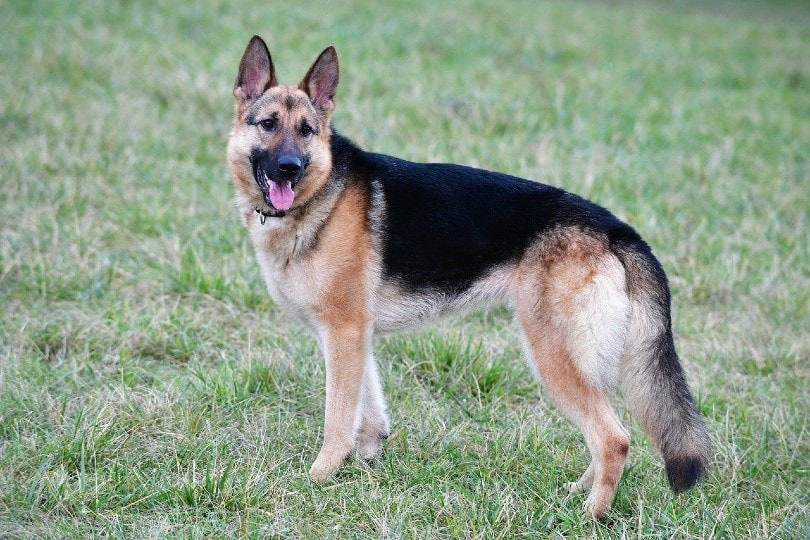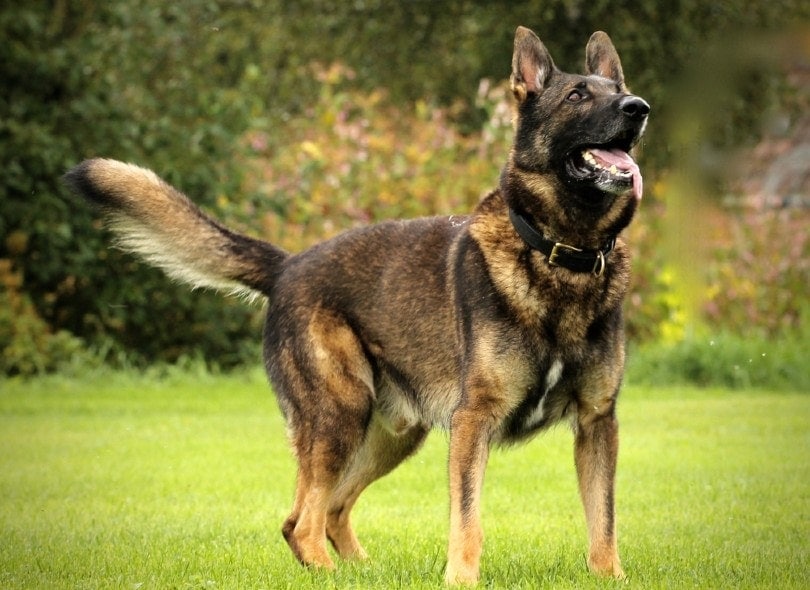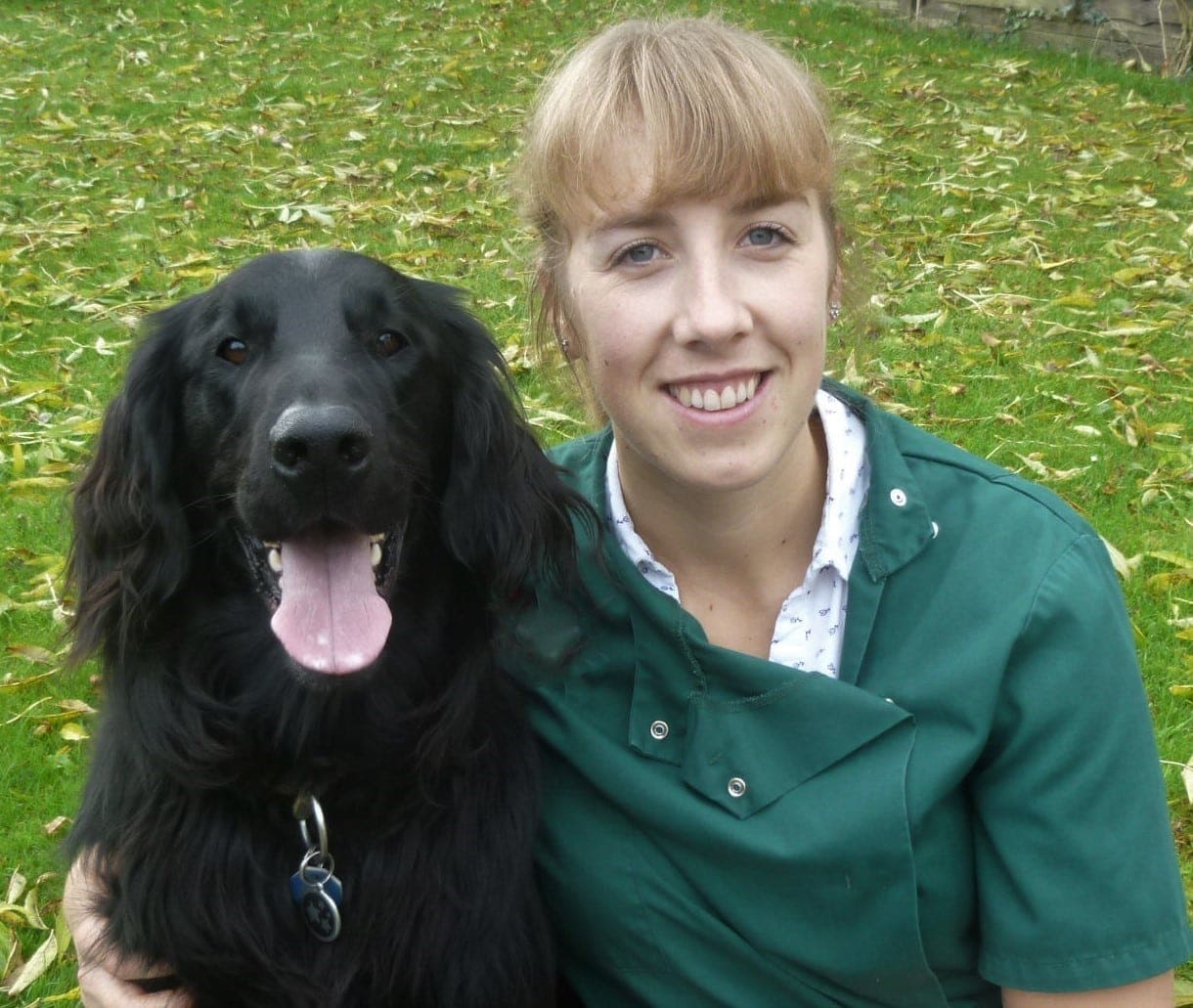3 Common Vet-Reviewed German Shepherd Tail Problems You Should Know About

Updated on

German Shepherd Dogs (GSDs), like most dogs, use their tails as a key means of expression. Sometimes, they can develop issues with their tails or perianal area, either from an injury or an infection, while other conditions may have an autoimmune or even a genetic component. Unfortunately, when it comes to purebred dogs like German Shepherds, there are some genetically predisposed and hereditary illnesses that you should be familiar with as their owner.
Getting your German Shepherd from a reputable breeder is very important, unless you are adopting from an animal shelter, but even then, your GSD will still not be entirely immune from hereditary issues or illness they may be more inclined to develop. Tail and perianal problems are not uncommon in large dogs like German Shepherds. In this article, we look at three that you should know about. Let’s dive in!
The 3 Common Tail Diseases in German Shepherds
1. Anal Furunculosis
Anal furunculosis is a serious and unfortunately common health condition in German Shepherds that seems to have a genetic component. It is also referred to as perianal fistula. Research is still in progress in order to fully understand the causes and genetic link behind this disorder1
The condition is characterized by skin inflammation, infection, and ulceration with formation or draining tracts or tunnels under their tail and around the anus and is most likely a result of your GSD’s immune system not operating properly. The condition is painful and uncomfortable for your pooch and is often frustrating and challenging to treat. It can become fairly severe and cause the dog to become lethargic and excessively lick the area, as well as being unable to properly sit down or wag their tail.
The disorder can affect your GSD’s defecation because it can become very painful, and the treatment of the condition can be uncomfortable too. The condition is found in other dogs but is most common in German Shepherds—84% of cases are in GSDs2.
The condition must be diagnosed by a vet and is commonly treated using long-term immune-modulating medication, like cyclosporine, azathioprine, tacrolimus or corticosteroids, while in some cases surgery may even be required.
2. Limber Tail Syndrome
Limber Tail Syndrome is characterized by the hanging of your dog’s tail limply from the base, accompanied by pain and discomfort. The condition can be brought on by several different causes but has mostly beenobserved after immersion in cold water3. The condition is not usually serious and can be treated at home after a veterinary assessment with anti-inflammatories and rest, and your dog should fully recover after a few days.

3. Skin Infection
Skin infections are fairly common in GSDs and are sometimes found at the base of your German Shepherd’s tail. Skin infections are easily spotted because there will typically be hair loss, redness, and itching. If you’ve noticed your GSD incessantly chewing or gnawing at their tail, it may be because there is an itch that they are trying to scratch. It’s best to try to stop them from gnawing or licking the infection because it can cause the wound to get bigger and worse.
Your vet will examine the area and identify the cause of infection, which may be self-inflicted due to excessive licking and as a consequence of skin irritation caused by parasites, skin infection, or pyoderma (sometimes referred to as a hotspot when in a particular area), or due to allergic skin disease.
Other Dog Tail Issues to Be Aware Of
Other than the mentioned illnesses, there are other common tail issues in German Shepherds, including the following.

Dog Tail Chasing
It can be amusing to watch a GSD chase their tail, and if it happens occasionally, there is no issue. But the habit can become obsessive, at which point, you may have a problem. There are many causes for this habit, most of which are behavioral and thus can be stopped with proper training. Lack of exercise, insufficient space, stress, and anxiety may all be possible causes.
Lack of exercise, insufficient space, stress, boredom, frustration, and anxiety may all be possible causes. However, some skin conditions causing irritation and itchiness of the tail area, such as presence of fleas, intestinal parasites, allergic skin disease, or a skin infection in the area, may also cause the dog to chase their tail in order to chew at it. These causes require veterinary attention.
Curled Tail
A curled tail is not that common in GSDs and has a genetic component that cannot be “fixed” if it occurs. Luckily, the issue doesn’t cause any pain or discomfort to your dog and is purely cosmetic. This may not be considered a breed standard, but there is really nothing that can or should be done about this little quirk. Besides, a curled tail looks adorable and it’s best to leave it alone!
Excessive Tail Wagging
German Shepherds are known for wagging their tails, although often moderately and at a slower pace than some other breeds like spaniels, but they may still be fairly prone to tail-wagging-related injuries. This enthusiasm can cause them to knock their tails into things and cause bruises, cuts, and bleeds. Excessive tail wagging can be a sign of stress or anxiety, but it is usually just due to a happy, excited pooch!

Final Thoughts
Your German Shepherd’s tail is a vital part of their communication and balance, and as such, it needs to be paid careful attention to. Several issues can arise concerning your GSD’s tail, some of which require veterinary attention and treatment. As with any illness or injury, though, it’s best to take your GSD to the vet if you notice any tail issues.
See also:
- 10 Best CBD Oils for Dogs – Reviews & Top Pick
- 100+ Aggressive Dog Names: Ideas for Fierce & Combative Dogs
Featured Image Credit: cvop, Pixabay













